Peroxisome proliferator-activated receptors alpha, Beta, and gamma mRNA and protein expression in human fetal tissues
- PMID: 20706641
- PMCID: PMC2913814
- DOI: 10.1155/2010/690907
Peroxisome proliferator-activated receptors alpha, Beta, and gamma mRNA and protein expression in human fetal tissues
Erratum in
- PPAR Res. 2010;2010:627284
Abstract
Peroxisome proliferator-activated receptors (PPARs) regulate lipid and glucose homeostasis, are targets of pharmaceuticals, and are also activated by environmental contaminants. Almost nothing is known about expression of PPARs during human fetal development. This study examines expression of PPARalpha, beta, and gamma mRNA and protein in human fetal tissues. With increasing fetal age, mRNA expression of PPARalpha and beta increased in liver, but PPARbeta decreased in heart and intestine, and PPARgamma decreased in adrenal. Adult and fetal mean expression of PPARalpha, beta, and gamma mRNA did not differ in intestine, but expression was lower in fetal stomach and heart. PPARalpha and beta mRNA in kidney and spleen, and PPARgamma mRNA in lung and adrenal were lower in fetal versus adult. PPARgamma in liver and PPARbeta mRNA in thymus were higher in fetal versus adult. PPARalpha protein increased with fetal age in intestine and decreased in lung, kidney, and adrenal. PPARbeta protein in adrenal and PPARgamma in kidney decreased with fetal age. This study provides new information on expression of PPAR subtypes during human development and will be important in evaluating the potential for the developing human to respond to PPAR environmental or pharmaceutical agonists.
Figures



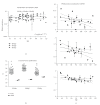

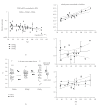
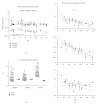
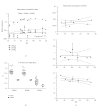
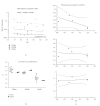
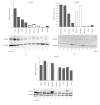
Similar articles
-
Regulation of peroxisome proliferator-activated receptors (PPAR) α and -γ of rat brain astrocytes in the course of activation by toll-like receptor agonists.J Neurochem. 2015 Jul;134(1):113-24. doi: 10.1111/jnc.13101. Epub 2015 Apr 16. J Neurochem. 2015. PMID: 25818681
-
[Development of a cell-based peroxisome proliferator-activated receptors (PPARs) screening model and its application for evaluation of triterpenoids isolate from Alismatis Rhizoma].Zhongguo Zhong Yao Za Zhi. 2016 Nov;41(21):4015-4022. doi: 10.4268/cjcmm20162121. Zhongguo Zhong Yao Za Zhi. 2016. PMID: 28929690 Chinese.
-
Expression of peroxisome proliferator-activated receptors in zebrafish (Danio rerio).Histochem Cell Biol. 2002 Sep;118(3):231-9. doi: 10.1007/s00418-002-0434-y. Epub 2002 Jul 4. Histochem Cell Biol. 2002. PMID: 12271359
-
Peroxisome proliferator-activated receptor (PPAR)β/δ, a possible nexus of PPARα- and PPARγ-dependent molecular pathways in neurodegenerative diseases: Review and novel hypotheses.Neurochem Int. 2013 Oct;63(4):322-30. doi: 10.1016/j.neuint.2013.06.012. Epub 2013 Jun 25. Neurochem Int. 2013. PMID: 23811400 Review.
-
Peroxisome proliferator-activated receptors (PPARs): novel therapeutic targets in renal disease.Kidney Int. 2001 Jul;60(1):14-30. doi: 10.1046/j.1523-1755.2001.00766.x. Kidney Int. 2001. PMID: 11422732 Review.
Cited by
-
Deregulated transcription factors in cancer cell metabolisms and reprogramming.Semin Cancer Biol. 2022 Nov;86(Pt 3):1158-1174. doi: 10.1016/j.semcancer.2022.10.001. Epub 2022 Oct 13. Semin Cancer Biol. 2022. PMID: 36244530 Free PMC article. Review.
-
Testing for departures from additivity in mixtures of perfluoroalkyl acids (PFAAs).Toxicology. 2013 Apr 5;306:169-75. doi: 10.1016/j.tox.2013.02.016. Epub 2013 Mar 5. Toxicology. 2013. PMID: 23470359 Free PMC article.
-
Suppression of IL-8 production in gastric epithelial cells by MUC1 mucin and peroxisome proliferator-associated receptor-γ.Am J Physiol Gastrointest Liver Physiol. 2012 Sep 15;303(6):G765-74. doi: 10.1152/ajpgi.00023.2012. Epub 2012 Jul 5. Am J Physiol Gastrointest Liver Physiol. 2012. PMID: 22766852 Free PMC article.
-
Correlation between Conjugated Bisphenol A Concentrations and Efflux Transporter Expression in Human Fetal Livers.Drug Metab Dispos. 2016 Jul;44(7):1061-5. doi: 10.1124/dmd.115.068668. Epub 2016 Feb 5. Drug Metab Dispos. 2016. PMID: 26851240 Free PMC article.
-
Transcriptional Regulation of Energy Metabolism in Cancer Cells.Cells. 2019 Oct 9;8(10):1225. doi: 10.3390/cells8101225. Cells. 2019. PMID: 31600993 Free PMC article. Review.
References
-
- Desvergne B, Wahli W. Peroxisome proliferator-activated receptors: nuclear control of metabolism. Endocrine Reviews. 1999;20(5):649–688. - PubMed
-
- Keller H, Devchand PR, Perroud M, Wahli W. PPARα structure-function relationships derived from species-specific differences in responsiveness to hypolipidemic agents. Biological Chemistry. 1997;378(7):651–655. - PubMed
-
- Michalik L, Desvergne B, Dreyer C, Gavillet M, Laurini RN, Wahli W. PPAR expression and function during vertebrate development. International Journal of Developmental Biology. 2002;46(1):105–114. - PubMed
-
- Escher P, Wahli W. Peroxisome proliferator-activated receptors: insight into multiple cellular functions. Mutation Research. 2000;448(2):121–138. - PubMed
LinkOut - more resources
Full Text Sources

